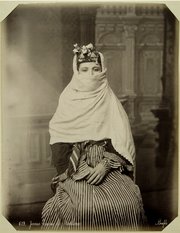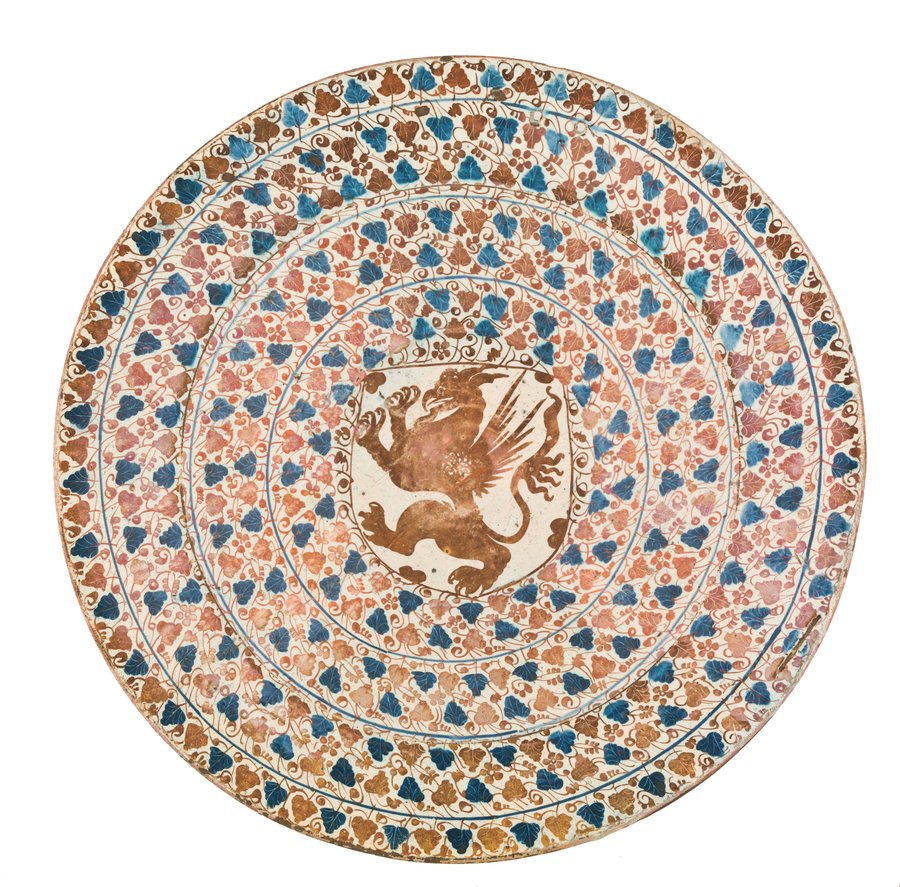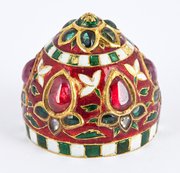
Lustreware Dish with Rampant Griffin
Museum of Islamic Art
- Title:
- Lustreware Dish with Rampant Griffin
- Production place:
- Manises
- Date:
- 1450 - 1475
- Period:
- Kingdom of Castile and Leon
- Title:
- Lustreware Dish with Rampant Griffin
- Production place:
- Manises
- Date:
- 1450 - 1475
- Period:
- Kingdom of Castile and Leon
- Material:
- Earthenware, Glaze, Pigment, Lustre
- Technique:
- Glazing, In-glaze painting, Lustre painting
- Dimensions:
- 8.3 cm
- Diameter:
- 45.5 cm
This dish, an example of Valencian lustreware, is decorated with a coat of arm of a rampant griffin at the centre and a series of interlaced floral motifs with alternating blue and brown ivy leaves. The 8th - 9th century AH/14th - 15th century CE is marked by a large production of ceramics in the city of Manises, on the outskirts of Valencia, using the lusterware technique, which originated from Fatimid Egypt and was first established in Spain via the ports of Malaga and Murcia in the late 6th century AH/12th century CE. This is the prominent Buyl family of Manises who introduced the technique to the city, after discovering Nasrid workshops during diplomatic visits in Granada, and controlled the large production of dishes, bowls, pots, and especially albarelli. Despite a complex political context, this era evokes the creation of a style that incorporates Islamic techniques and decorative materials adapted to the commissions of Christian nobility. We know that Italian merchants imported a large number of Valencian ware which were commissioned by noble families in Florence, Venice, Naples and Sicily. The griffin here possibly refers to the Villani family of merchants in Florence. The same arrangement of ivy leaves was also popular on large vases and albarelli, which were depicted in Dutch and Renaissance Italian paintings (e.g. fresco of the Annunciation of Bastiano Mainardi in the Collegiata of San Gimignano, 1482 CE and the Portinari tryptich of Hugo de Gand, 1476-1478 CE).



